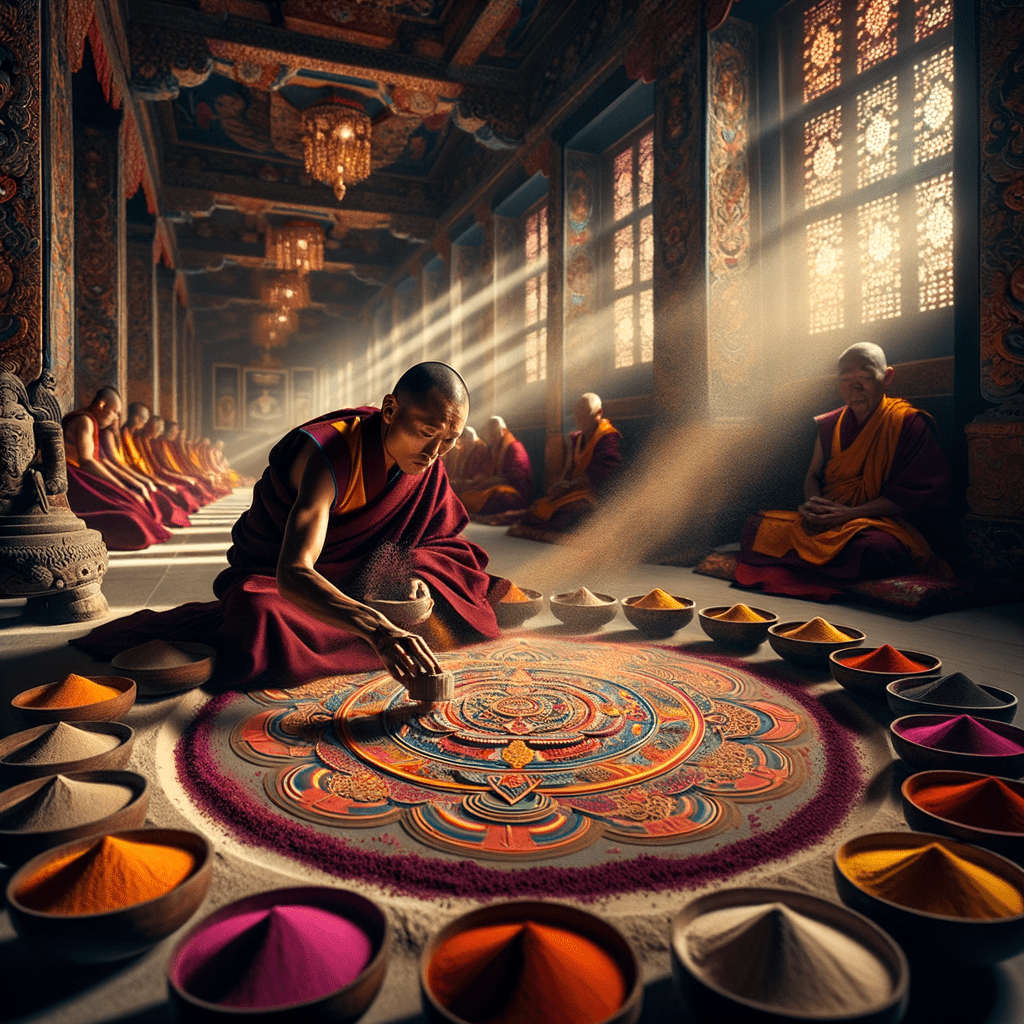Discovering Sand Mandalas: An Unexpected Journey
You know those moments when you stumble upon something so beautifully complex that it leaves you lost for words? That’s exactly what happened when I first came across sand mandalas. It wasn’t just a casual glance; it was like hearing ancient stories through vibrant colors and symmetrical patterns. There’s so much depth and wisdom hidden in these intricate designs, and as someone who’s always had a thing for traditions that endure through time, these little masterpieces took hold of my heart in an indescribable way.
More Than Just Sand: A Meditation on Impermanence
There’s something magical about sand mandalas that’s hard to explain. They’re not just fancy artwork to dazzle your eyes—they embody a meditative practice, grounded in age-old traditions, reminding us that everything is fleeting, and my goodness, aren’t those bright colors just playful in how they dance temporarily before disappearing? I remember seeing a mandala being made for the first time, and I was utterly gobsmacked by the patience and precision of it all. Watching the monks hunched over, dot by tiny dot, using those funny-looking metal straws called chak-purs, was like observing life’s quirkiest moments, where concentration and a sneeze might blow all best-laid plans to bits. I mean, don’t we all have those “oops” moments?
Tibetan Traditions: Sacred and Relatable
Creating these complex and sacred designs ties back to Tibetan Buddhist practices, embodying everything from spiritual exercises to the vivid universe in artistic form. They’re not just dabbing sand here and there—this is the real deal: a complete lesson in patience, embracing change, and a kind of quiet protest against trying to hold onto things forever. When a sand mandala is eventually, and quite ceremoniously, dismantled, it sends its healing energies soaring outwards. To me, that moment is a sweet-sad song about life’s ebb and flow — beautiful in its brevity.
Whenever I ponder on sand mandalas, it kinda hits home how I sometimes cling to things I should maybe be letting go of — a bit heavy, I know, but such is life, right? They’ve got a knack for reflecting our hang-ups and dreams, giving us little nudges about how to handle life’s temporary nature with a bit more grace.
A Harmonious Dance of Color and Meaning
Joining the monks in this elaborate meditation, even from the sidelines, I was struck by the harmony of chanting, incense, and the musical clink of falling sand. Each color symbolizes something different: blue whispers of wisdom, red murmurs compassion. Even the structures, like squares grounding everything, mean something profound. Knowing what all these colors and shapes represent adds another layer of awe to this delicate art form.
But, honestly, what pulls me into sand mandalas more than anything is how eloquently they speak to loss and rebirth. While we tend to fear goodbyes, these beautiful pieces teach us there’s solace in letting go. They remind us that impermanent beauty is often the most cherished.
A Dream of Community and Hope
What truly touches me is the communal spirit they foster. Watching monks work together, each with distinct roles yet all aiming for this fleeting beauty, makes me hopeful that we humans can learn to collaborate — not just for lasting creations, but to cherish the moments that flicker by. This spirit, I believe, is something we could all use more of in our daily grind. Instead of chasing perfection, why not embrace the quirky, imperfect now?
So, if you ever get the chance to see a sand mandala come to life, jump at it! You might get sand in your shoes, or maybe take away a thought that clings longer than the sand. Either way, it’s witnessing a sacred art form, a whisper of wisdom that lingers even when the sand is gone.












